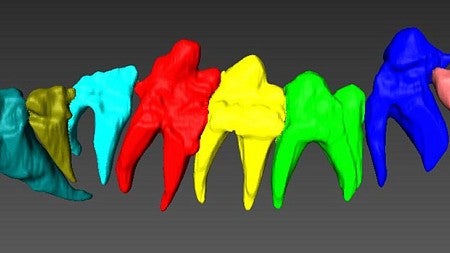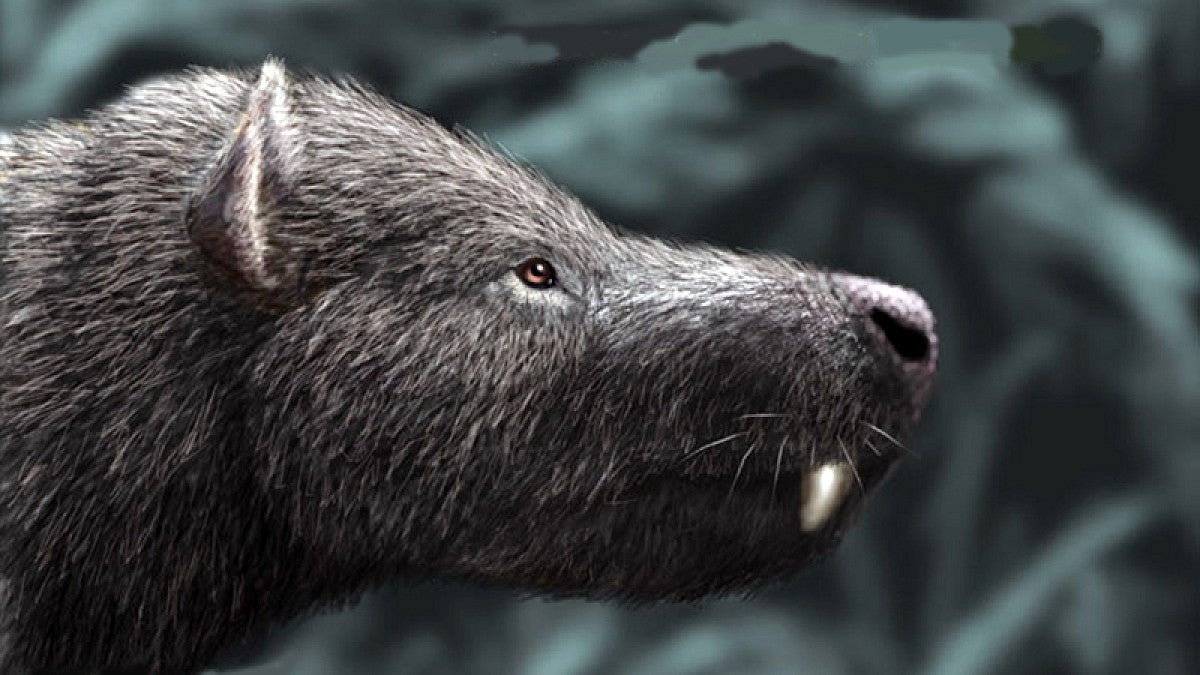During her senior year at the University of Oregon, Selina Robson pulled a heavily damaged jaw from the Condon Fossil Collection at the UO’s Museum of Cultural and Natural History. She soon wondered if the specimen had been misidentified.
Last month, almost four years later, her curiosity and subsequent work led to documentation that the jaw likely belonged to a large bone-cracking, meat-eating, hooved mammal — the first of its kind to be placed in the Pacific Northwest.

“This fossil animal, the size of a bear but related to pigs and camels, would have been an important carnivore in ancient Oregon,” he said. “It is another species from this time period that shows a connection to Europe and Asia, supporting the idea that animal dispersal from these continents to North America was relatively easy at this time.”
In the June issue of the journal Palaeontologia Electronica, UO researchers identified the creature as a likely Harpagolestes uintensis, one of the largest members of mesonychids, a taxonomic order that went extinct some 30 million years ago.
The jaw was found 50 years ago in Hancock Quarry, part of the Clarno Formation in the John Day Fossil Beds National Monument in Eastern Oregon. More than 2,000 vertebrate specimens, mostly animals larger than 22 pounds, have been found in the quarry. The newest member is the third carnivorous mammal to be identified.
Robson, a Corvallis native who now is a doctoral student at the University of Calgary, took the jaw from the Condon Collection shelves in the 2015-16 school year. She was continuing research she had started in a vertebrate paleontology course taught by graduate employee Nicholas Famoso and Samantha Hopkins, a professor in the Clark Honors College and Department of Earth Sciences in the College of Arts and Sciences.
“To identify a specimen, you typically compare it to the published literature, looking for shared features that help you assign the specimen to a group,” Robson said. “This specimen was badly damaged, rendering identification challenging.”
Davis stepped in with technology not available when the fossil, initially labeled as a bearlike Hemipsaladon, was found. Computerized tomography, or CT scans, used in collaboration with Oregon Imaging Centers, found hidden aspects of the teeth, allowing the research group to digitize the new information and build a three-dimensional reconstruction of the mammal’s jaw.
The combined dental work provided sufficient similarities for Robson, in her first published research in paleontology, to label the creature as a Harpagolestes cf. uintensis. The cf. refers to “citation for comparison” that stops short of a definitive classification.
“This particular species of mesonychid is especially cool because it is essentially a carnivorous hyena-like pig that was the size of a bear,” Robson said. “Knowing that it was in the Pacific Northwest improves our understanding of Oregon's ancient ecosystems and adds to the known global distribution of mesonychids."
The mammal’s origin is unclear. However, based on the younger dating of fossils found in parts of Asia and the U.S. Rocky Mountains and Great Plains, the Hancock Quarry specimen supports the theory of a migration along the Bering Strait region, the researchers wrote in their conclusion.
“By learning about ancient ecosystems from a warmer, more connected world, we can better anticipate the ecological and evolutionary consequences of our current warming world and the mixing of ecosystems that has happened with human-caused introductions of invasive species,” Davis said.
With the new identification, he said, work likely will begin soon to display the jaw at the UO Museum of Natural and Cultural History. A copy also could land at the John Day Fossil Beds National Monument, where co-author Famoso now works with the U.S. National Park Service.
—By Jim Barlow, University Communications


